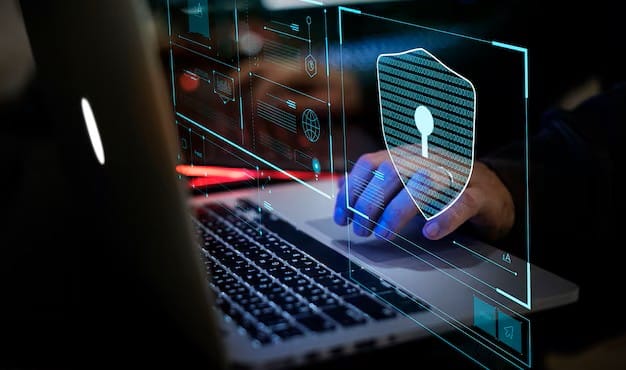
In the rapidly evolving digital landscape, cybersecurity threats are becoming more advanced, more frequent, and more damaging. As we step into 2025, both individuals and organizations must be aware of the latest threats looming on the horizon. This blog highlights the top cybersecurity threats to watch out for in 2025—and crucially, how you can protect yourself and your business.
1. AI-Powered Cyberattacks
What’s Happening:
- Artificial intelligence is being used to automate cyberattacks, generate realistic phishing emails, and identify system vulnerabilities at an unprecedented scale.
- AI-powered malware can bypass traditional security systems and evolve dynamically, making detection significantly harder.
Real-World Example:
- In 2024, AI-generated phishing attacks rose by 35 percent.
- Cybercriminals used AI-driven voice cloning and deepfake technology to impersonate trusted individuals and organizations.
How to Stay Safe:
- Use AI-powered defense tools to counter AI-driven threats.
- Train employees to detect AI-generated phishing scams.
- Continuously update and monitor cybersecurity infrastructure.
2. Deepfake Scams and Impersonation
What’s Happening:
- Deepfake technology is being used to impersonate executives, celebrities, and government officials.
- Cybercriminals leverage AI-generated voices and videos for fraud, misinformation, and identity theft.
Real-World Example:
- In 2024, a deepfake CFO tricked an employee into transferring over $25 million in company funds.
- Fake investment videos featuring Elon Musk led to millions in losses.
How to Stay Safe:
- Educate teams about social engineering and impersonation threats.
- Verify video and audio communication using a secondary authentication method.
- Implement biometric and multi-factor authentication.
3. Ransomware-as-a-Service (RaaS)
What’s Happening:
- Ransomware attacks are now accessible to cybercriminals via subscription-based dark web services.
- Organizations and individuals are at risk of data encryption and extortion by inexperienced attackers.
Real-World Example:
- In 2024, the BlackCat ransomware group targeted healthcare and financial institutions, causing major data leaks.
- RaaS-related attacks are projected to increase by 60 percent in 2025.
How to Stay Safe:
- Maintain regular, encrypted backups of critical data.
- Keep software and security systems patched and updated.
- Invest in ransomware detection and response solutions.
4. IoT and Smart Device Vulnerabilities
What’s Happening:
- The rapid adoption of smart devices creates more attack surfaces for hackers.
- Many IoT devices lack security protections and are vulnerable to cyber threats.
Real-World Example:
- In 2024, cybercriminals exploited security flaws in smart thermostats to launch botnet-driven DDoS attacks.
How to Stay Safe:
- Change default passwords on all smart devices.
- Segregate IoT devices from core business networks.
- Regularly update firmware and disable unnecessary features.
5. Supply Chain Attacks
What’s Happening:
- Cybercriminals target third-party vendors to gain access to larger corporations.
- These attacks impact thousands of businesses downstream and are difficult to detect.
Real-World Example:
- The SolarWinds cyber attack compromised U.S. government agencies and Fortune 500 companies.
- Similar large-scale supply chain breaches are anticipated in 2025.
How to Stay Safe:
- Conduct thorough security assessments of third-party vendors.
- Use software bills of materials (SBOMs) to track dependencies.
- Implement zero-trust architecture to reduce vulnerabilities.
6. Quantum Computing Threats (Emerging)
What’s Happening:
- Quantum computing advancements may render traditional encryption methods obsolete.
- Current cryptographic algorithms like RSA and ECC could become ineffective.
Industries Most at Risk:
- Finance (banking transactions, digital payments)
- Healthcare (patient records, medical research)
- Government (classified data, national security)
How to Stay Safe:
- Monitor developments in post-quantum cryptography.
- Transition to quantum-resistant encryption algorithms such as CRYSTALS-Kyber and SPHINCS+.
- Avoid long-term storage of sensitive data in unencrypted formats.
Final Thoughts
Cybersecurity in 2025 is no longer just an IT concern—it is a strategic priority. As threats evolve, proactive defense measures are essential. Whether you are an individual, a small business, or a large enterprise, staying informed and prepared is the best defense against cyber threats.
Key Takeaways:
- Stay updated on emerging threats like AI-driven attacks and deepfake scams.
- Implement robust cybersecurity practices such as regular backups, software updates, and employee training.
- Consider advanced security frameworks like zero-trust architecture, multi-factor authentication, and AI-driven threat detection.
- Collaborate with cybersecurity experts to enhance security posture.
By proactively addressing these risks, individuals and organizations can strengthen their cybersecurity defenses and safeguard the digital world in 2025 and beyond.